Russian Navy. A sad look into the future: a mine-catastrophe
In the case of domestic mine-sweeping forces, this scheme does not work. No, of course, in the structure of the Russian Navy there are both sea and base and raid minesweepers, and in quite a noticeable number. The problem is that in spite of the presence of ships, mine-trawling forces capable of dealing with some kind of modern threat, in the Russian Federation there is no.
Why did this happen?
It is no secret that today, the fleet’s combat capability is still based on ships built and built under the Soviet Union. SSBN? Their basis is still constituted by the “Dolphins” of the 667BDRM project, made in the USSR. Multipurpose NPS? "Pike-B", made in the USSR. Submarine missile carriers? Project 949A "Antey", made in the USSR. Missile cruisers? Big anti-submarine ships? Diesel submarines? Our only aircraft carrier?
Made in USSR.
But with the minesweepers, alas, they blundered in the USSR. And by 1991 g we had, although numerous, but already outdated trawling fleet, which already then was not able to solve the tasks before it. Of course, the USSR worked on overcoming this lag, but it didn’t have time, and “bequeathed” it to the Russian Federation, and we ...
However, first things first.
From the very moment of mine-trawling inception and up to about the 70-s of the last century, the main method for the destruction of mines was trawls towed by specialized ships - minesweepers. At first, the trawls were contact (their principle was based on cutting the miniport - a cable connecting the mine to the anchor), then - non-contact, able to imitate physical fields in such a way as to force the detonation of the bottom mines. However, the mine case was continuously improved, and the moment came when this scheme was outdated. In the 70 of the twentieth century, a mine revolution took place in the west: trawling (that is, towing a trawl across a minefield) replaced mine trawling ahead of the minesweeper, and specialized hydroacoustic stations (GUS) were engaged in the search, and - Unmanned underwater vehicles.
At first, everything was not so bad - at the beginning of the same 70-s of the Soviet Navy received a comprehensive mine finder seeker KIA-1. It consisted of a hydroacoustic station MG-79 and STIUM-1 (self-propelled remote-controlled mine finder). KIU-1 is a first-generation complex, its technical characteristics were quite at the level of imported counterparts.
But then the strange began. First, the fleet with a creak accepted innovation, preferring the usual towed trawls. Secondly, the development of the next-generation anti-mine complexes was taken from Leningrad to Uralsk (Kazakh SSR) - and there it was started from scratch. As a result, before the collapse of the USSR, in 1991 g, the second generation STIUM “Ketmen” was created, as far as can be judged - a powerful aggregate of large dimensions, but alas, with a high level of physical fields, which is absolutely not good for fighting the threat of mines. Ketmen became an integral part of the KIU-2 complex. Apparently, the USSR is already lagging behind the NATO naval forces. Work was also begun on the 3 generation STIUM “Route”, which were supposed to provide parity for the USSR as tools for mine-fighting. However, the development of the "Route" could not be completed before 1991 g, and then ...
Then there was a failure almost in a decade, and only at the end of the 90-ies the corresponding order was issued to the state research-and-production enterprise (SNNP) "Region", which had considerable experience in creating uninhabited underwater vehicles and underwater marine weapons. The new complex was supposed to include:
1) Automated mine action system (ACS PMD) "Sharp"
2) GAS mine detection with a podkidny antenna "Livadia"
3) GAS mine detection on a self-propelled remote-controlled underwater vehicle "Livadia STPA"
4) STIUM for the destruction of mines "Maevka"
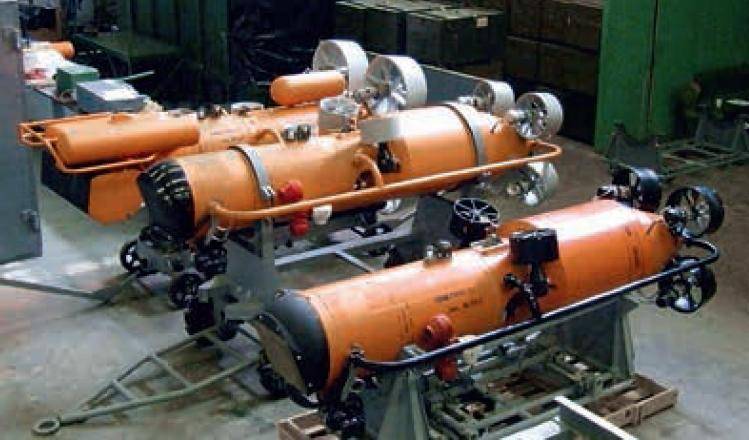
Unfortunately, it seems that “Livadia STPA” had difficulties, a towed side-scan sonar was created instead. Everything would be fine, but with such a GAS the minesweeper loses the ability to conduct anti-mine reconnaissance along the ship's course. According to others, “Livadia STPA” nevertheless ultimately earned as it should, but, unfortunately, the author does not have accurate data on this subject.
And now let's briefly briefly describe the peripeties of domestic mine action complexes and list minesweepers as part of the Russian Navy. In total, our fleet includes three types of minesweepers:
1) Marine - the largest, capable of performing minesweeping work at a great distance from their native shores, including accompanying ships of the fleet on long voyages,
2) Basic - for operation in the waters of the closed seas, ensure the safety of approaches to the bases of the fleet.
3) Raid - for action inside the water area of ports, on raids, in rivers.
Let's start from the end. As 1 December 2015 g as part of the Russian Navy was totaled 31 raid minesweeper (RTSCH), including: RTSCH project 697TB (2 pcs) RTSCH 13000 project (4 pcs) RTSCH 12592 project (4 pc), RT-168 1253 project (1 units), XTNXX RTN-343 project (items 1225.5), 1 RTN projects (1258 pieces) and 10 RTsch project (10750 pieces). All of these ships have from 9 to 61,5 tonnes of displacement, speed from 135 to 9 units, artillery armament in the form of a single 12,5-mm or 30-mm machine gun, or 25-mm Utes machine gun, some of them are provided with the placement of MANPADS.
As an exotics, there are some interesting two radio-technical equipment of the project 697TB, created on the basis of small fishing trawlers.
Yes, perhaps, the four minesweepers of the 13000 project, which are radio-controlled unmanned boats - breakers of minefields.
But alas - with the exception of nine ships of the 10750 project, all ships of this subclass can only use towed trawls, which means they are completely outdated. In essence, it does not matter when they were created or how long they could remain in the ranks - the only important thing is that they are not able to fight not even with the modern mine threat, but even with 80 mine of the last century.
The situation with the minesweepers of the 10750 project is slightly better.
They were originally built taking into account the use of the KIU-1 or KIA-2M Anakonda mine complex (the latter using the KImen STIUM).
There were 22 units in the Russian fleet, including the 19 of the 12650 project and the 3 project of the 12655 project, however, these projects do not have any fundamental differences between them.
The standard displacement of ships is 390 T, the speed is 14 knots, the cruising range is up to 1 700 miles. Originally armed with one twin 30-mm gun mounted in the bow and one 25-mm - in the stern, later instead of them began to install 30-mm six AK-630. The "highlight" of the project was the wooden case - fiberglass at that time was not yet sufficiently mastered by industry. As an anti-mine vehicle, BSTSH can carry either KIU-1 or towed trawls of various types. Due to the reduced level of physical fields (wood!) And the newest for 70-s (the construction of the minesweepers of this project started then), the anti-mine fighting system, which at that time KIU-1 was, could be considered one of the best minesweepers in the world. All 22 ships of this type were commissioned in 80-x - the beginning of 90-ies of the last century, and only "Magomed Hajiyev" - in 1997 g.
And finally, sea minesweepers. We have them on 1 December 2015 g was listed as 13 units, including:
MSCH project 1332 - 1 units.
A former fishing trawler, in 1984-85 he was re-equipment in Arkhangelsk. Standard displacement 1 290 t, speed - 13,3 bonds, weapons - 2 double-barreled 25-mm machine gun, two grenade launchers MRG-1.
MSCH project 266M - 8 units.
The standard displacement is 745 T, the speed is 17 knots, the range is 3 000 miles, the armament is two 30 mm cutters AK-630, two 25 mm submachine guns, 2 RBU-1200, Igla-1 MANPADS. Of all the MTSchch of the 266M project as part of the Russian Navy, only 2 ships of this type were put into service in 1989 g, the rest - as early as the 70s of the XX century They were very good for their time, they could use KIU-1, today six ships of this type are in the 40 formation for years and more, and the two youngest are 29 for years.
MSCH project 12660 - 2 units.
The standard displacement is 1 070 T, the speed is 15,7 knots, the range is 1 500 miles, and the armament is one Xnumx-mm AK-76 and AK-176М, 630 * 2 PU launchers of the Strela-4 MANPADS. Anti-mine - KIU-3 with STIUM "Ketmen"
MSCH project 266МЭ - 1 units. Valentine Pikul. Similar in its performance characteristics to the ships of the 266M project, it was possibly intended for more modern mining and armament weapons (KIA-2?), Became part of the fleet in 2001 g
MSCH project 02668 - 1 units. "Vice Admiral Zakharyin".
The standard displacement is 791 t, the speed is 17 knots, one 30-mm AK-306, two 14,5-mm machine guns, the Igla-1 MANPADS. It is a MTSCH project 266МЭ adapted for a new anti-mine complex with the STIUM “Mayevka”. Launched in 2009
So what do we have? Formally, we have as many 56 minesweepers of different types, but if you look a little more closely, it turns out that only modern X-machines of trawling can be used with modern methods of trawling. It seems to be a good idea too - but if this is to forget that the 34 ship of the above listed can only be used by the C-21, that is, the equipment of the 1-s. But the same Kaptora (at least theoretically) are capable of fighting only 70 ships, of which 13 are raid minesweepers with a displacement of 9 tons, i.e. they are completely non-merciless.
However, if you listen to the words of people directly related to the mine case, then the picture emerges much more gloomy. The fact is that for some reason the leadership of the Navy underestimated the modern means of searching and destroying mines, and, despite the appearance of the newest KIA, it preferred to use the old, good, time-tested trawls. In the fleet, KIU (integrated mine-seeker-destroyer) in the fleet was used by individual officers and enthusiasts, and all official tasks were set and solved by towed trawls — in other words, the Soviet Navy, despite the presence of remote-controlled underwater vehicles, did not acquire as many Something rich experience in dealing with mine danger through CVD.
In the Russian Federation, these trends have only intensified. And therefore, despite the presence of ships that theoretically can use KIA, practically only two minesweepers used them - the “Valentin Pikul” and the “Vice-Admiral Zakharyin”. On the first, the container version of the new KIU with the STIUM (self-propelled remote-controlled mine finder) was tested, “Mayevka”, on the second - the ship version.
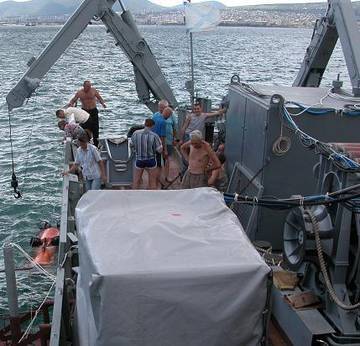
The first one is interesting in that it can be installed on almost any ship, even if it is not a minesweeper, but, as far as the author knows, after the tests this copy was removed from “Valentin Pikul”, and at “Vice-Admiral Zakharyin” exploitation was faced either with technical, whether with some more problems.
In other words, as part of the Russian Navy on 1 December, 2015 g was ONE minesweeper with a bit of modern anti-mine weapons. And perhaps there was not one.
What does this mean? For example, the impossibility in combat conditions to withdraw strategic-class submarine cruisers from bases, because no one is stopping the US nuclear submarines from setting up mines during a threatened period.
Here, however, the question arises - how could it happen then in general? And here we return to the description of the misfortunes of domestic KIA.
The fact is that at about 2009, we had a relatively modern CI 3 generation - the combination of Dies, Livadia and Mayevki, which was developed instead of the Route created in Kazakhstan. Judging by the table below, among its foreign “classmates”, “Mayevka” did not shine with “indifferent in the world” indicators.
And so, as far as it is possible to assume according to information from open sources, a collision of interests of the three groups occurred.
The first group, the creators of “Mayevka”, naturally, advocated that their system, which passed, by the way, all the required state tests and adopted, went into mass production.
The second is the designers of the new mine-threat complex called Alexandrite ISPUM. This system is the next, 4-th generation, which should, by its functionality, go to the world level.
And finally, the third group, which did not see the point of messing with domestic developments, but preferred to purchase self-propelled controlled underwater vehicles in France.
In the end, it turned out that for the HPN 2011-2020 we had, albeit not the best in the world, but still quite functional complex "Diez" / "Livadiya" / "Mayevka", which passed state tests and is ready for mass production. Perhaps this complex had some problems, but again, judging by the information in the open press, there was nothing that could not be fixed during the operation. In other words, we had mine-sweeping forces of about six dozen mine sweepers, “stuck” in their fighting qualities somewhere in 60-s and completely unable to fight not with the modern, but even with the mine threat of 90 level years of the last century. And with a relatively modern mine fighting complex, which, perhaps, did not have enough stars from the sky, but was still fully operational - but which was not available to our minesweepers.
So, we could choose “a bird in the hands” - to put it simply, to modernize our least old sea, base and raid minesweepers, replacing the equipment (or using the place where it should have been) KIA-1 and 2 “With Sharp,“ Mayevka ”and Livadia. We could, in addition to the old ships, build a small series of cheap basic minesweepers based on the same 12650 project, with its wooden hull. Thus, we would have today, if not the best in the world, but still more or less adequate mine-sweeping forces, capable with high probability of ensuring the entry-exit of our surface and underwater forces from naval bases.
But instead, we preferred the “crane in the sky” - with a wave of the hand at “Maevka”, we continued to develop “Alexandrite-ISPUM”, and developed a new type of minesweepers for the 12700 “Alexandrite” project. At the same time, at a minimum, the lead ships of the series were to receive French systems for the search and destruction of mines, until the Alexandrite-ISPUM was ready, and when it would still be ready ... Well, it could turn out differently, because under the Minister Defense Serdyukov the rejection of domestic developments in favor of imports was with us, as it is now said, the most fashionable trend.
In fairness it should be noted that there were supporters of the "French loaf" and the rationale for their position. The fact is that remote-controlled vehicles in conjunction with the GUS to search for mines turned out to be quite effective anti-mine weapons. Accordingly, the mines received technology that impedes such a method of trawling. It looked like this - when setting up a minefield, most of the mines were set based on the surface and submarine ships of the enemy, but some of them had to play the role of “mine defenders” - they exploded as they approached the underwater demining vehicles.
Of course, such an approach complicated the trawling, but still did not make it impossible. For example, it would be possible to use surface unmanned vehicles to initiate explosions of “mine defenders”, and then, when “defenders” are neutralized, to carry out trawling using conventional methods. Or it was possible to create kamikaze underwater vehicles, which, at the cost of their death, would have caused the mine defenders to explode, after which nothing would have threatened the “real” underwater remote-controlled vehicles. Perhaps there were also other options for dealing with mine defenders, but we didn’t have this.
The enthusiasm of our fleet with old towed trawls did not allow us to gain much-needed experience in the operation of remote-controlled underwater vehicles, respectively, with the appearance of "mine defenders" there was a feeling that even promising domestic STIUM were outdated and some fundamentally new means of dealing with the new threat not even in development. At the same time, foreign military thought followed the path of the "kamikaze", creating disposable mine destroyers. Their advantage was that with the help of such a “kamikaze” the mine was destroyed quickly and very reliably, the disadvantage is that the device cost much more than any mine.
Therefore, the position of the supporters of the “French” option: “Let's buy a foreign superaparatura, but we will not wait until our MIC creates the next one” either a mouse or a frog, but the unknown animal still had a perverted logic, but because from Alexandrite-ISPUM "(ulita is traveling - sometime it will be) foreign submarines actually proved their worth. Therefore, if the idea was to acquire several sets of imported equipment in order to gain experience with them and an idea of their potential If we could improve our own developments, this would be a very reasonable decision. However, as far as the author could understand, the supporters of the purchase of French equipment were talking about something else - about the complete replacement of domestic elaborations with imports.
In general, we tried to purchase the whole range of equipment required in France - judging by the armament that is offered for minesweepers of the 12700 project for export, each minesweeper should receive:
1) Two autonomous anti-mine underwater vehicles of the Alister 9 type with an operating depth of up to 100 meters;
2) Two remote-controlled uninhabited underwater vehicles of the K-Ster Inspector type with an operating depth of up to 300 meters;
3) Ten disposable remote-controlled underwater mine destroyers of the K-Ster Mine Killer type.
Alas - then everything went in full accordance with the proverb of the people, and instead of “a crane in the sky”, we got a “duck under the bed”.
The head minesweeper of the 12700 project, “Alexander Obukhov”, was laid on 22 in September of 2011 g, was launched in June on 2014 g, and entered the system only in 2016 g.
Yes, but he did not receive any French equipment - by virtue of the sanctions, it was prohibited to supply modern trawling systems to the Russian Federation.
Thus, we have received the latest, very large (full displacement - 800 t) and not having analogues in the world minesweeper. Do not laugh, it really has no analogues - its hull is formed by vacuum infusion, while the world record was set, since its length was 62 meters and the "Alexander Obukhov" became the largest ship in the world made using this technology.
The fiberglass hull gives the minesweeper advantages, significantly reducing the level of its physical fields. Even taking into account the fact that a modern ship of this class should not climb into a minefield by itself, this is an extremely useful bonus, because anything happens to the sea and additional protection by the minesweeper will never be superfluous.
However, its main anti-mine weapons remain the same towed trawls, which are conceptually outdated in the 70s of the last century. However, this is not a completely correct statement, because unmanned boats were also used by the “Alexander Obukhov”.
Do not give to buy overseas mine complexes? Let's buy a crewless boat, the benefit of which the restrictions on sanctions for some reason have not spread. Moreover, the “device” of the French turned out to be really quite interesting: it has two GUS, one of which is designed to detect mines at a depth of 10 m (old anchor mines), and the other at depths of 100 m, including bottom , and can operate at a distance of 10 km from the carrier ship! In addition, the Inspector is able to “manage” (more precisely, to relay control from the minesweeper) to submersible mine destroyers of the K-Ster Mine Killer type.
True, the K-Ster Mine Killer itself was never sold to us. The reasons why the French Navy was not at all interested in the brainchild of the “gloomy French genius” under the name Inspector-MK2 have not been announced. At the time of the transaction, the manufacturer didn’t have a single “Inspector” in any country in the world. On this informational background, questions about whether a competition was held among foreign manufacturers of such equipment, whether an optimal offer was chosen, and whether the Inspector-MK2 passed state tests in the Russian Federation clearly go to the category of rhetorical. In the end, we should have bought from the French at least something, because the funds for this are allocated! And so, in 2015, Prominvest, part of Rostec Corporation, concludes a contract for the supply of Inspectors to 4. Two of them were delivered directly to our fleet in the same 2015, but it’s unclear about the second pair, perhaps they were never delivered to the fleet (did the French remember the sanctions?)
But, be that as it may, a pair of “Inspectors” filled up our fleet. So, the lead ship of the 12700 project minesweepers series still received modern anti-mine weapons? Unfortunately no.
The problem is that buyers somehow did not pay attention to the geometric dimensions of the "Frenchman." And they, unfortunately, do not allow Inspector-MK2 to be taken aboard the minesweeper of the 12700 project.
As a result, “Alexander Obukhov”, of course, can bring “Inspectors” in tow ... or put the crew there (there is such an opportunity) so that they take the French boats to the right area, and then, before the trawling, take people off. The main thing is that the excitement does not happen, because in this case the transfer from the 9-meter boat will become one more problem ...
There is one more “funny” nuance. Someone might say that we supposedly bought Inspector-MK2 in order to get acquainted with the best foreign technologies, see what they are doing abroad and adjust their own developments. But the problem is that the French "Inspector" is optimized to search for mines at shallow depths (up to 100 m), that is, it completely does not cover the whole range of mine defense tasks (today some mines can be placed at 400-meter depth). Accordingly, its acquisition (followed by ... eghkm ... replication) could solve only the particular tasks of trawling the waters of naval bases and approaches to them (where the depth is appropriate). But these boats were purchased for a very large sea minesweeper, which is absolutely contraindicated for work at shallow and very small depths!
Today we are designing Typhoon unmanned boats, which should surpass the French Inspectors in their capabilities, but ... let's start with the fact that the 12700 project minesweepers in the world, with all their advantages, have one minus - they are expensive. The cost of "Alexander Obukhov" is authentically unknown, but the bmpd blog cites data on its insurance contract. So, the insured value of the head minesweeper of the 12700 project is “from the moment of testing until the ship is handed over to the Customer” 5 475 211 968 rub. Most likely, this is the cost of the new minesweeper, but it is possible that this insurance contract only provides for compensation for the costs of its construction, i.e. the cost of this ship is higher by the amount of the manufacturer's profit and VAT.
But even if 5,5 billion rubles. - this is the price of the fully finished ship, and without its main weapon, the anti-mine complex (which could only be partially taken into account in the cost of the minesweeper, as the minesweeper was not equipped with anything except the HAS), the 12700 project ships for us truly "Gold". And it is precisely such that, apparently, the “Typhoons” want to make for them, which already cost 350 million rubles in the basic configuration.
But what is 350 million? Nonsense. Therefore, the manufacturer proposes to equip the unmanned boat with shock modules (!) And / or Orlan unmanned aerial vehicle (!!!). No, don’t think bad, the UAV performs an “archival” function - if without it, the typhoon control range from the minesweeper reaches 20 km (which is clearly more than enough), then from the UAV - as many as 300 km! The same can be driven directly from the St. Petersburg Admiralty into radio-controlled boats! And if they are also equipped with combat modules, then they can arrange a "sea battle" at the meeting ...
It remains only to be glad that there are no proposals to equip the Typhoon with launchers for the Gauges and the landing deck for a promising vertical take-off and landing fighter (although ... the author of this article is not surprised by anything). Strictly speaking, the integrity of the developers perfectly characterizes the above poster. As follows from the table “heading”, they compare their “Typhoon” with the Inspector-MK2 ... but here in the “for some reason” table the performance characteristics of the previous Inspector-MK1 modification are given.
And here's the sad result. Today we are building the “golden” minesweepers of the 12700 project - one was commissioned, four more - at different stages of construction, are expected before 2020. In December, 2016 of the Navy Commander Vladimir Korolev reported that 3 of the minesweeper was “contracted”, but stocks, they still have not stood up. In addition to them, we create at least "golden" typeless "Typhoon" type boats. In the depths of the scientific research institute "gloomy domestic genius" with might and main is designing the latest and most modern anti-mine system Alexandrite-ISPUM, which will certainly be the best in the world, but sometime later, for now, you need to remember to transfer the next stage of development work in a timely manner ... And, by the way, discover new research. Because of the incomprehensible negligence of the Alexandrite-ISPUM is being developed exclusively in the ship modification, but not in the container one, therefore, for example, it is not possible to install it on our under-ships-patrol ships of the 22160 project.
At the same time, our only operational complex "Diez" / "Livadia" / "Mayevka" is already on one minesweeper, its container modification tested on "Valentina Pikule", according to some sources, was taken somewhere near Moscow.
Well, what if war? Well, have to learn from the experience of the Royal Navy. One of the key tasks of Rear Admiral Woodward, who commanded the carrier group of the British in Falklands, 1982, was to ensure the landing of the landing force - and bloodless whenever possible. All anything, but the approaches to the landing site could be mined, and in the composition of the Woodward connection there was not a single minesweeper. New ships of this type have just been tested, and they have not sent them to beat the originally British Falklands from the Argentines.
But how to deal with mine danger? Rear Admiral had no choice - he had to send one of his frigates, Alakriti, so that he could check the presence of mines in the landing zone with his own bottom. In his memoirs, Woodward wrote:
The admiral risked a small frigate with a crew of 175 people, so as not to endanger the landing craft jam-packed with marines. It is in this way that, in which case, we will have to put SSBNs into the sea - by launching a multipurpose nuclear submarine in front of them, because the Russian Navy does not have a different way to protect missile submarines from modern mines. There is only one nuance - when the British ship was killed in battle, its commander or senior officer, according to tradition, uttered the phrase: “The King has many” (“King has a lot”). And even in the Falklands, despite the fact that the Royal Navy in 1982 r was only a shadow of its former glory, this phrase would still be fair with respect to Alakriti - the Crown still had quite a few small frigates.
Alas, this cannot be said about our multi-purpose submarines.
Previous articles of the cycle:
Russian Navy. Sad look into the future
Russian Navy. A sad look to the future (part of 2)
Russian Navy. Sad look into the future. Part of 3. "Ash" and "Husky"
Russian Navy. Sad look into the future. Part of 4. "Halibut" and "Lada"
Russian Navy. Sad look into the future. Part of 5. Specialty boats and this weird EGSONPO
Russian Navy. Sad look into the future. Part of 6. Corvettes
Russian Navy. Sad look into the future. Part of 7. Small rocket
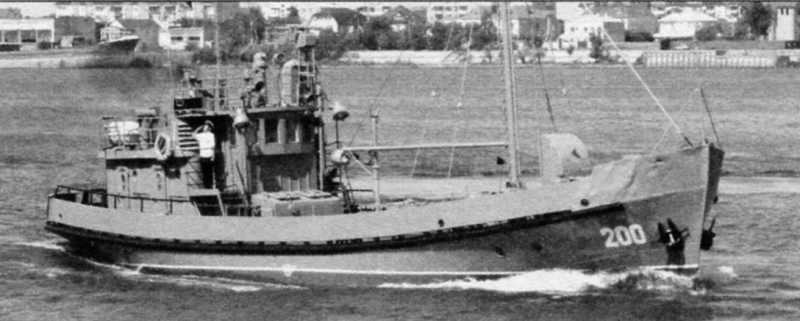
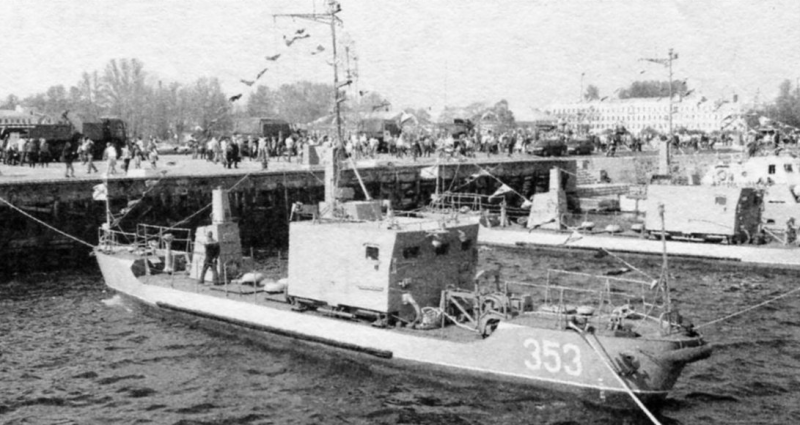
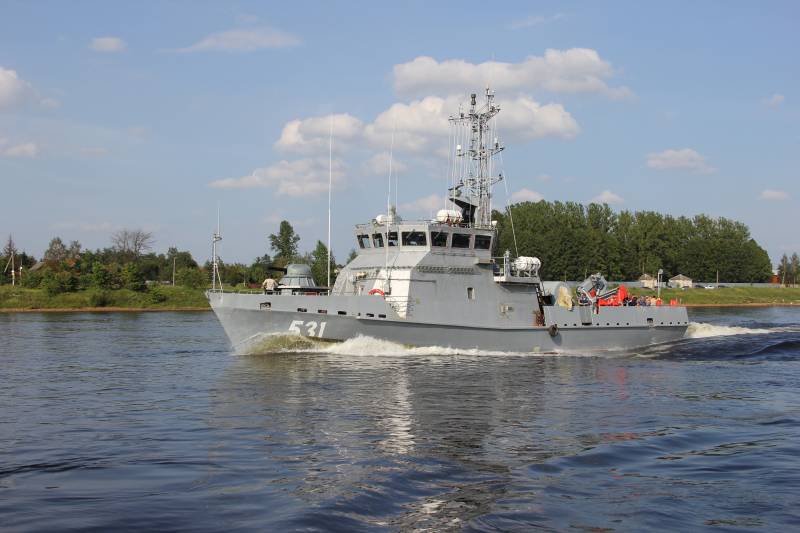
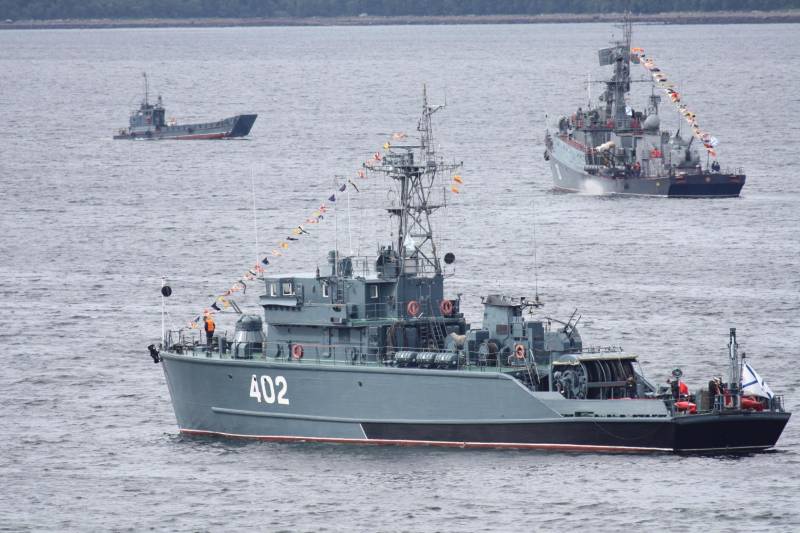
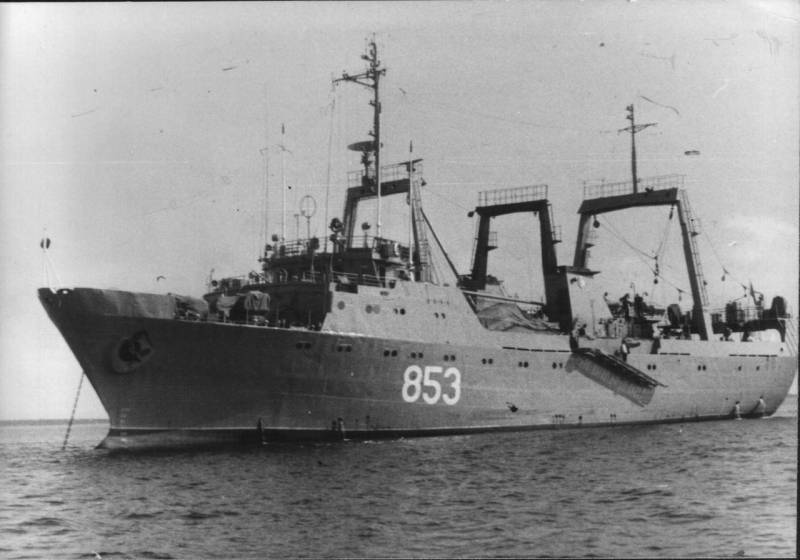
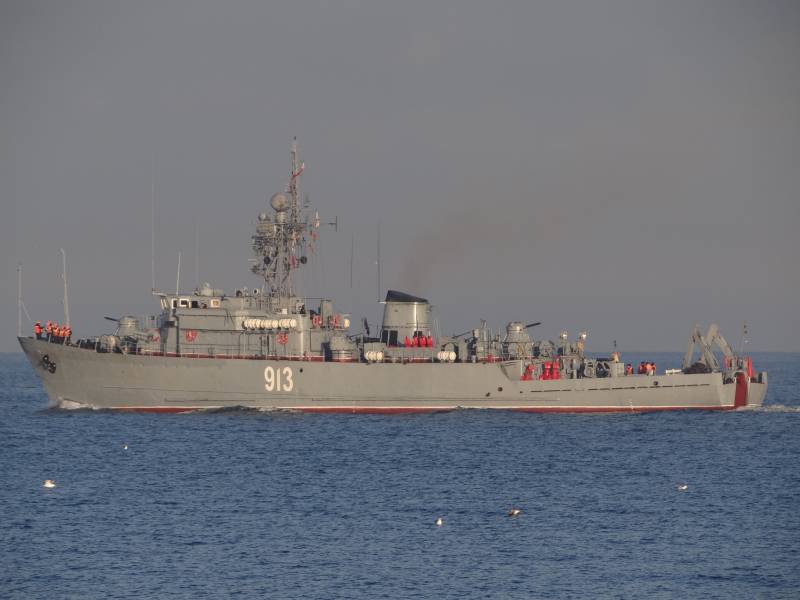
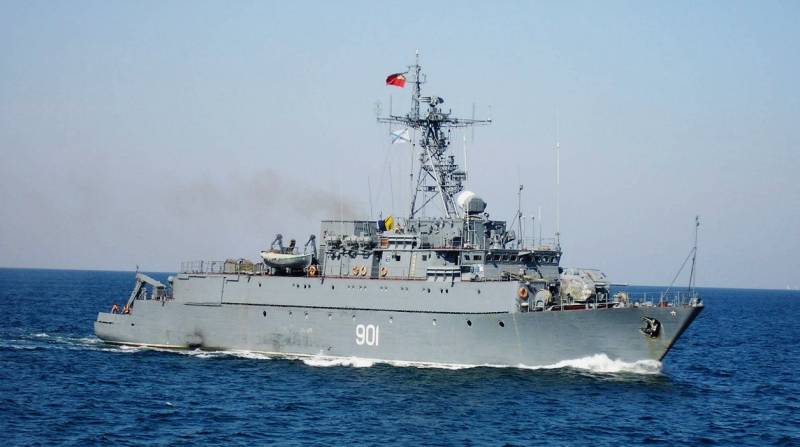
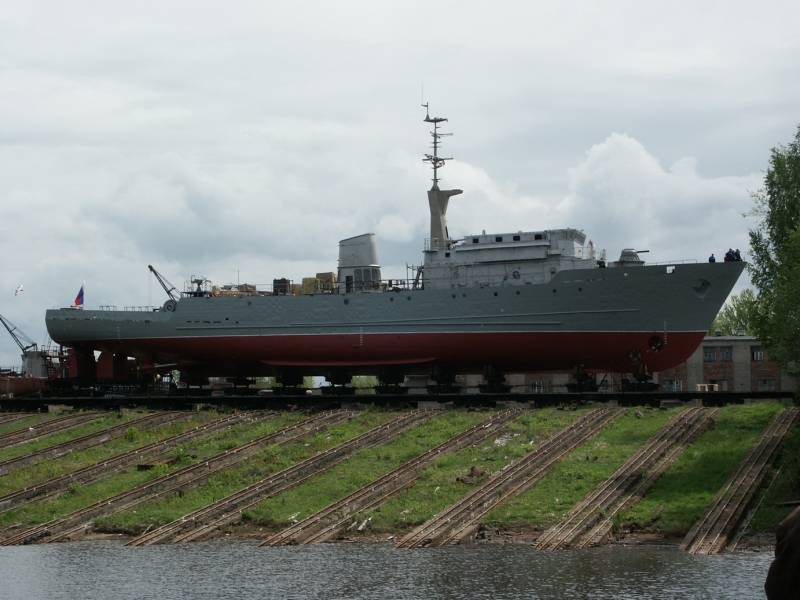
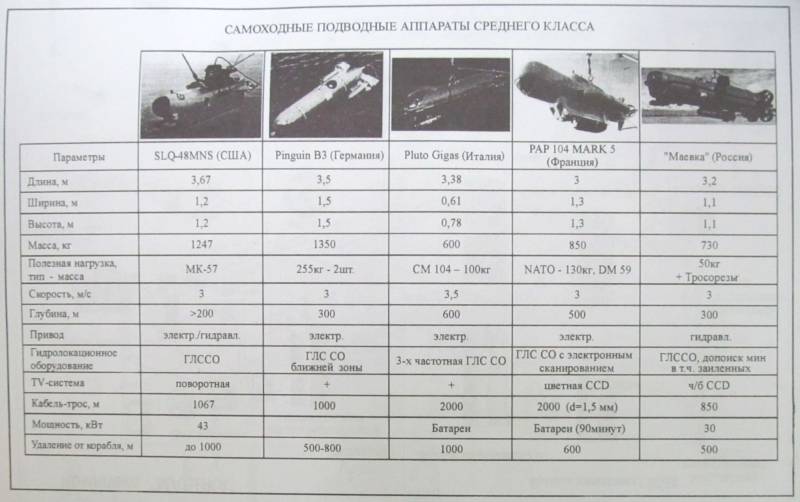
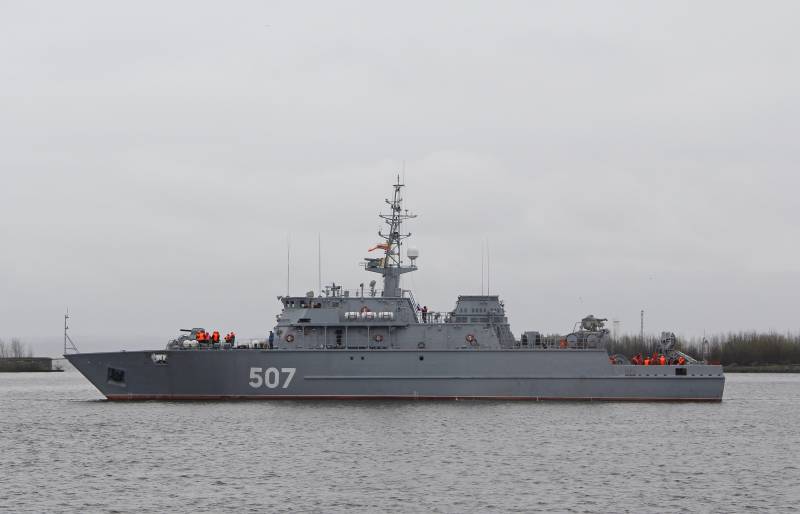
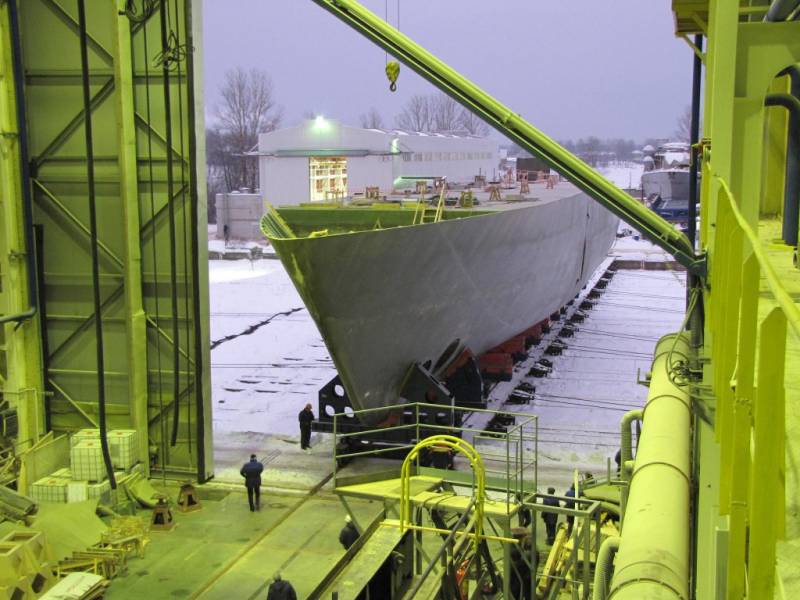
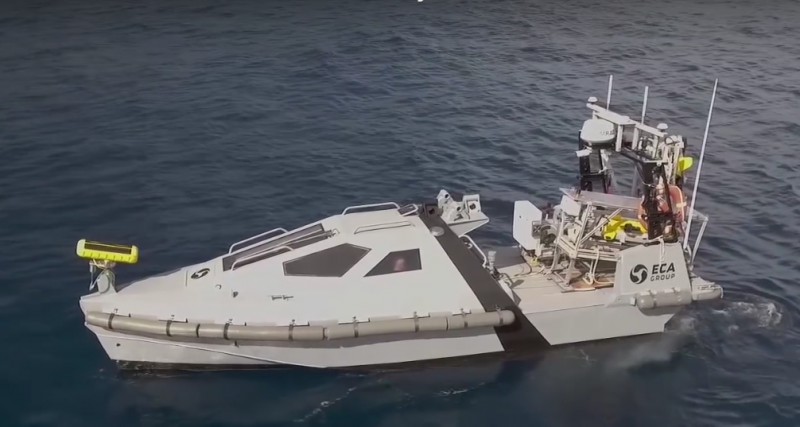
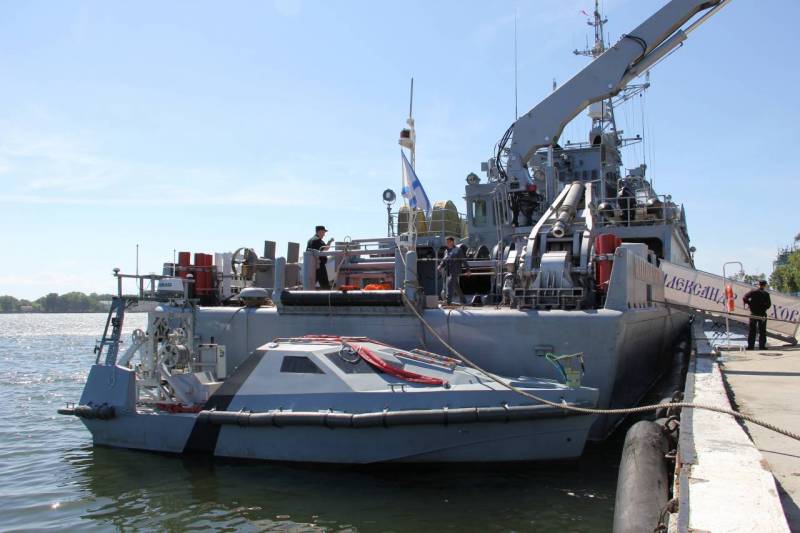
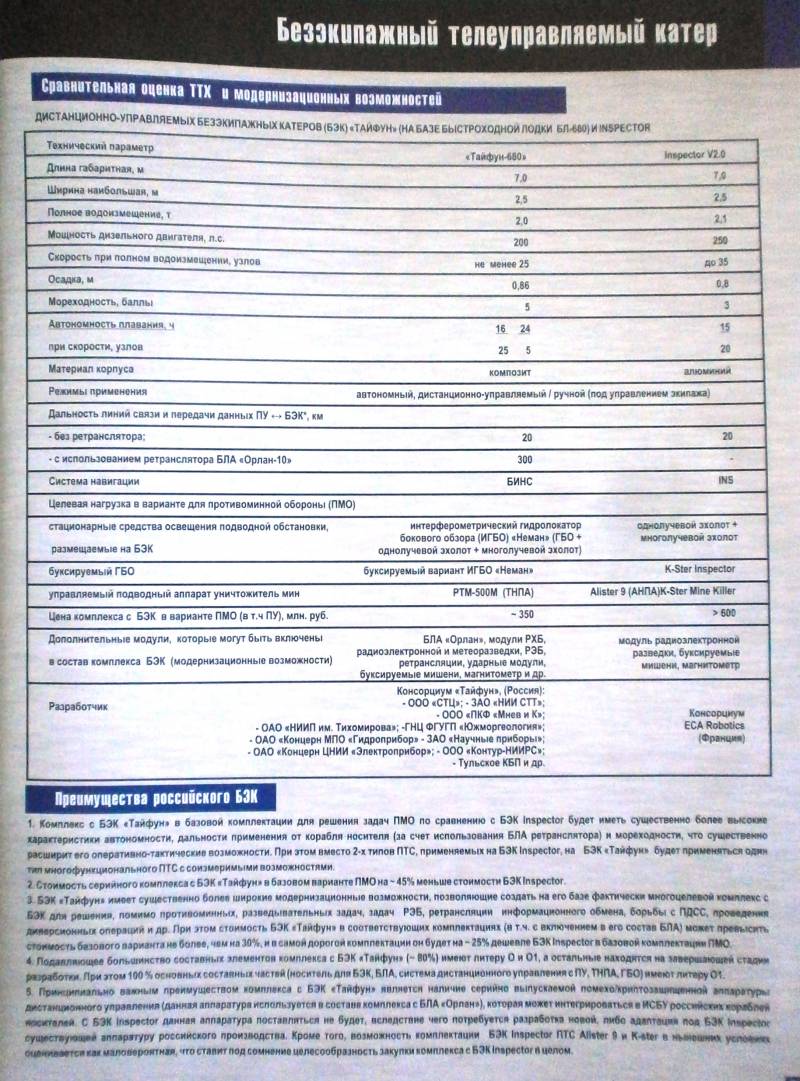
Information